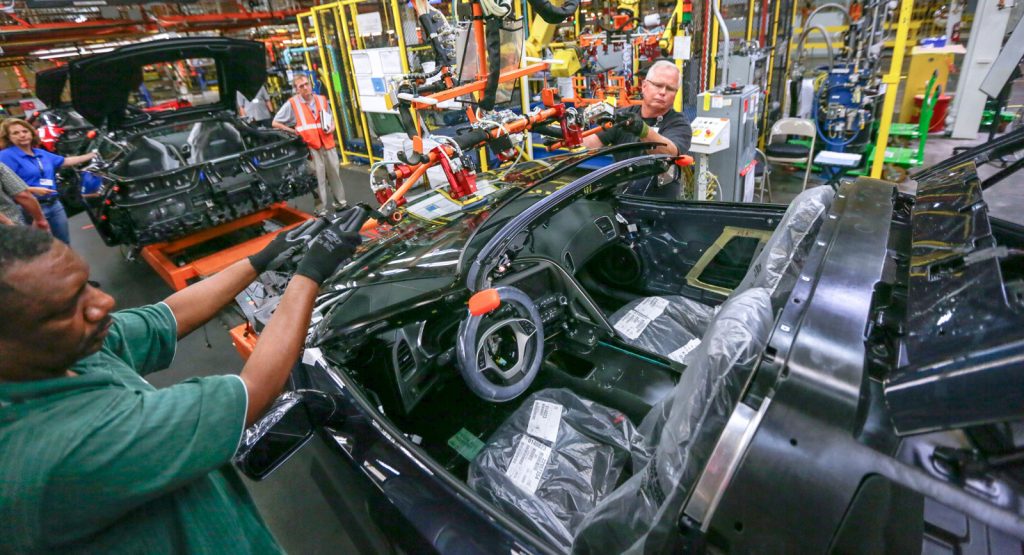One topic that keeps popping up is the ongoing chip shortage that continues to foil automakers around the world. It’s estimated that the scarcity of semiconductors has cost the auto industry over $60 billion and is one aspect of the fallout from the COVID-19 pandemic that has caused a major dent in carmakers’ plans globally.
It’s slightly more complex than just supply and demand, but the concept is a good starting point. The broad strokes are these. The likelihood of a person buying a vehicle during the pandemic was low, forcing manufacturers to either halt or reduce production. The first quarter of 2020 saw a 17.7 percent drop in new car sales, while in March alone, the drop was a staggering 38.4 percent compared to the same month in 2019. The coronavirus pandemic affected all manufacturers of automobiles regardless of size. But as stay-at-home orders were relaxed, sales started to pick up quickly. This saw a new problem emerge.
The problem came in the form of the smallest component a vehicle needs to function: their microchips. Microchips enable electronic components of a modern vehicle to work – everything from the infotainment system to most basic engine control units, they all use chips. The growth in demand after the stay-at-home rules were relaxed blindsided manufacturers. In turn, companies producing these microchips were not able to ramp up supply in line with the sudden need for increased numbers.
Read: Focus Shifts To High-Profit Vehicles For US Carmakers Amidst Chip Shortage
Why? Because during the pandemic, when demand for new automobiles fell, automakers didn’t need these semiconductors as they scaled back production. This led to an overall drop in demand for from the auto manufacturing sector. Chip manufacturers thus shifted production to cater towards other industries, one of which was consumer electronics. The demand for consumer electronics exploded during the pandemic, with people stuck at home spending money on new TVs, laptops, phones, and gaming consoles. Suddenly automakers found themselves on the bottom of the pile.
As CNBC explains, there’s another factor too: the microchips needed for vehicle functionality are what are known as “legacy” chips, durable and long-lasting microchips that doesn’t yield the highest margins for manufacturers. Hence, the priority to supply microchips to the automotive industry wasn’t on the top of the list for microchip makers.
However, it hasn’t been a total surprise to the industry, which has faced such shortages in the past. A few manufacturers had foreseen the deficit in microchips, and some had already decided to vertically integrate to produce these microchips. The shortage can also be traced back to the fact that the vast majority of semiconductors are made in Taiwan. Automakers are supposedly several degrees removed from the actual producer, meaning that the initial reduction order likely had a ripple effect, causing a disproportionate scale-back on the producer’s side.
See: Production Of GM’s Second Best-Selling U.S. Model To Idle For Two Whole Months
Auto manufacturers who have factories dedicated to producing these chips are more likely to benefit from the uptake in sales. Insiders suggest that consumers would pay more money to receive their vehicle quickly, in comparison to spending less and waiting for their car to be delivered. The shortage of chips has raised many doubts about how sensitive the industry is and whether or not automakers are as agile as they should be. Analysts say there is some light, though. Bosch, for example, will be opening a factory in Dresden to satisfy the demand for some of these microchips. At the same time, this setback may be a massive eye-opener for other manufactures to pursue in-house chip production.
However, any long-term solution won’t come anytime soon. Automakers are instead focusing what microchips they have towards vehicles which would yield them higher profits, with many US companies shunning their cheaper cars. Meanwhile, General Motors forecasts that the chip shortage is likely to see $1.5 billion to $2 billion lost from this year’s profit, while both Ford and Stellantis predict that supply delays will likely continue into 2022.








